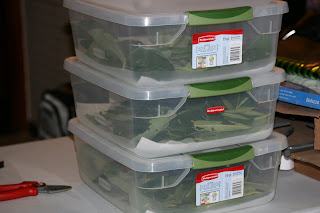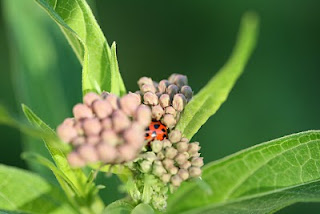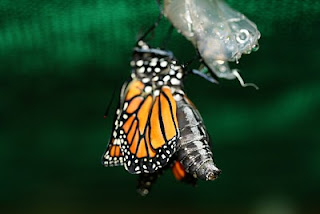I am sure most of have wished
your last monarchs Good Luck!
The pictures coming from
different parts of the country of the migration are beautiful!
The migration has been
sighted in the Indiana Dunes this week,
The Pelle Point, Ontario and
Cleveland Ohio last weekend were impressive!
There has been a large group
sighted in Missouri too.
It is so exciting to see all
the pictures and videos on the monarch facebook pages.
People have been posting
mostly from the Great Lakes region this week.
If you would like to join any of these pages look for
The Beautiful Monarch, Monarchs and Milkweed and Butterfly Gardening
People are sharing lots of
great photos.
Either everyone is looking
more for the migration groups or there are definitely more butterflies.
The update on the migration
can be seen daily at Journey North online
Please share you sightings
with Journey North, this info is important to gage the migration population.
Collecting Seeds: Now is the
time to be looking for mw seeds at home. They are ripening now.
Tuberosa may be finished, Swamp is coming in and Common will be ready in the
next few weeks, Tropical is ripening too.
Remember that the seed pods ripen from the bottom of the plant to the top. So
the lowest pods are ripe first.
Seeds are not ripe unless they are coco brown so if you cannot easily pop the
pod open, then it is probably not ready.
Check back in a day or so.
Take a brown paper bag out with you when you collect, a marker and clippers.
Don’t tear the pods off, you will get a hand full of sap.
Don’t get the white sap in
your mouth or eyes and remember: nothing smaller than your elbow in your ear!
Hahahhaha! Sorry, I digress.
Putting your seeds in paper
ensures they will have lots of air circulation to dry. There is a video on my
blog showing how to clean the fluff from the seeds after a couple of weeks of
drying.
Mw seeds are all very similar in appearance so mark the bag with your marker.
After cleaning, weigh your seeds if you can and put it in your notes for this year.
Then share them with as many people as possible.
Maybe send them into Bring Back the Monarchs Campaign. Here is the link. http://monarchwatch.org/bring-back-the-monarchs/milkweed/seed-collecting-processing/
Or, if you like, Monarch
Mommas and Poppas can send in a large group collected amount of seed. I can do
that if you want.
Monday I will be presenting a
lecture at the Oak Lawn Park Dist. 6:30 at the Oak View Center at 110th
and Kilpatrick in Oak Lawn.
I will be presenting the
Benefits of Biodiversity, join me in a lecture and discussion on the importance
of planting for pollinators. Registration is $5, come a little early to
register in the office.
Don’t forget that on October
5th I will be hosting a Monarch Season Wrap-up at 6:30 at the Oak View
Center at 110th and Kilpatrick in Oak Lawn. I am hoping to get as
many people there that have raised monarchs this year. I am going to present a
short program on how the season went according to Journey North, Monarch Watch
etc. Then I would like to have a discussion on how the season went for you.
Bring your totals with you, notes, photos and anything else you want to share.
If you have a Monarch Waystation, bring your certificate along.
I will have milkweed seeds to share and info on butterfly gardening. In lieu of
the $5 reg fee for the meeting I will have a collection jar for the Monarch
Watch.
Light Refreshments will be served.
I hope to see you there! From
what some of you have been telling me, this has been a great season! Let’s
celebrate it!
Some news articles I have
found this week…
http://globalnews.ca/news/2229166/monarch-butterfly-conservation-efforts-target-unused-green-spaces/
http://nativeplantwildlifegarden.com/help-monarchs-with-the-right-milkweeds/?utm_content=buffer85637&utm_medium=social&utm_source=facebook.com&utm_campaign=buffer














